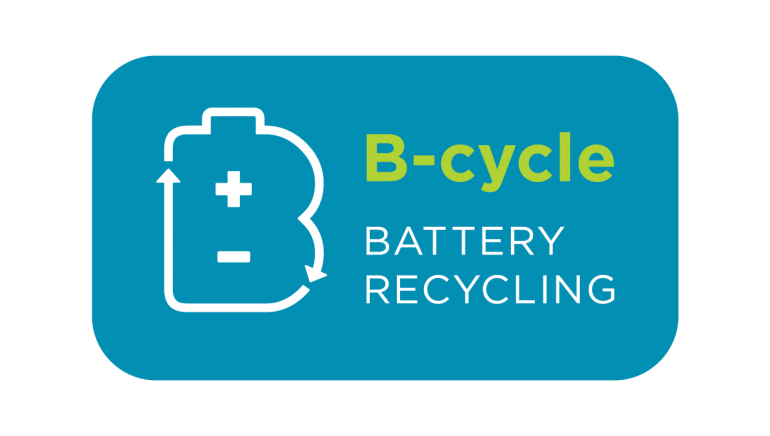Latest news
Read the latest news from the Centre for Sustainable Materials Research and Technology

The UNSW SMaRT Centre is lending its support to a new Australian Government-backed recycling scheme B-cycle that aims to make it easy for Australians to collect and recycle single use or rechargeable batteries such as alkaline or lithium batteries.
Centre Director Prof Veena joined the launch event to talk about the importance of recovering valuable materials from complex wastes and highlighted some of the SMaRT Centre's battery waste recycling technologies via its ARC Microrecycling and Battery and other Wastes Hub.
See the event video below:
B-cycle is a network of independent and accredited recycling organisations with 2351 drop off points and an additional 1200 regional drop off points to be introduced in the next few weeks.
Location points include retail stores nationwide such as ALDI, Bunnings, Officeworks, Woolworths, and community organisations such as the Lions Club, and many more. Drop off points, including at Coles, will be added over the coming months as more battery collectors and recyclers become accredited.
B-cycle launched via an online Zoom event on hosted by environmentalist Laura Wells and including an opening address from federal assistant minister for waste reduction and environmental management, Trevor Evans, including a panel discussion with leading industry professionals including Veena.
The B-cycle Scheme was founded by the not-for-profit Battery Stewardship Council (BSC), supported by the Commonwealth and all state and territory governments, authorised by the Australian Competition and Consumer Commission (ACCC), and funded by the federal government and the battery industry.
The Australian government invested $1 million for the Battery Stewardship Council to establish B-cycle. Brands that are funding the B-cycle scheme include Energizer, Duracell, Panasonic, Super Retail Group, Milwaukee, Stanley Black & Decker, and Makita.
The Assistant Minister for Waste Reduction Trevor Evans said that the Battery Stewardship Council has led the way by being among the first organisations to develop a voluntary product stewardship scheme under the Government’s $26 million Product Stewardship Investment Fund.
“As waste batteries, especially those used in small handheld devices, are one of the fastest growing waste streams, this industry-led scheme will play an essential role in significantly increasing Australia’s battery collections and recycling, and help our circular economy grow.
“But it will only work if industry plays its part. We must all work together toward Australian consumers soon being able to safely and responsibly manage all types of used batteries at their end-of-life”, said Assistant Minister Evans.
Libby Chaplin, CEO of B-cycle said, “We’re at a pivotal moment, setting in motion a nationwide reset on batteries, preventing harm and creating opportunities along a product’s whole value chain.
“A whopping 90% of Australia’s handheld batteries brought into the country end up in landfill. Any used batteries not recycled properly and safely can leach toxic chemicals into our environment, or even cause fires in the home when stored. Additionally, despite being a source of valuable and finite resources, battery recycling has remained small-scale in Australia - until now!”
Waste Management Review media story
The Fifth Estate media story on launch of B-cycle which quotes Veena from the event (see excerpt below):
Professor Veena Sahajwalla from the Centre for Sustainable Materials Research and Technology (SMaRT) is a leading expert in the field of recycling science, and founding director of the Centre for Sustainable Materials Research & Technology at UNSW.
She said that since batteries contain finite materials with “extremely high value” and that deliver an important service, “we must recycle it in the correct way so that it can deliver value”.
“These are materials in the many thousands [of dollars] in terms of value… we need connectivity at the micro level to deliver the right outcomes,” she said.
The materials within the batteries which are already “fit for purpose for remanufacturing and closing the loop” will be isolated with an awareness of the main final product, and what other additional residue will be left behind. The materials will then be harvested in a way that every part of the battery is recycled to create value.
“For example, if you have a combination of zinc and manganese, the best outcome is to harvest and isolate them in a way that you produce the value-added material and also are able to deal with every bit of residue to make it safe. You don’t want active and reactive residues left behind,” Ms Sahajwalla said.
“You have to make sure you understand the kinds of materials inside through a proper chemical analysis of all components, and investigate the pathways to monetise and value-add every piece of compound inside. This is where collaboration comes in… collaboration can help to ensure that you can create value from every piece of the product.”
Ms Sahajwalla placed emphasis on the “form, purity and outcome” of the final remanufactured product.
“The market will pay the price depending upon the quality of the output you create,” she said. “The quality and purity needs to remain high in order to maintain supply and demand of the materials. The economic questions must be asked first, and then followed through with environmental questions to ensure that all the planning is put in place beforehand.”
Creating value from recycled batteries means that the materials will be kept in the loop and will deliver economic benefits to Australia in the form of new manufacturing jobs and emerging technologies, she said.
Keeping waste within Australia means that the recycling can be monitored and assessed to ensure that it meets high sustainability standards so that Australia “can become a world leader” in scientific and technological advances when it comes to the circular economy.